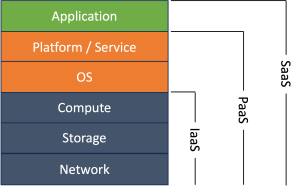I’ve been speaking to security startups over the last few weeks and some of the discussions made me think about the non-technical aspects of security that CISOs need to worry about. Specifically, things like mergers, acquisitions and divestitures and the different risks you will run into when executing these activities. There are a number of security issues that can materialize when combining businesses or separating businesses and in this post I’ll share some of the things you need to think about from a security perspective that may not be obvious at first glance.
What’s Going On Here?
There are a number of reasons for mergers & acquisitions (M&A) or divestitures. For the past two decades, the tech industry has used M&A to acquire smaller startup companies as a way to collect intellectual property, acquire specific talent or gain a competitive advantage. Divestitures may be the result of changing business priorities, separating business functions for regulatory reasons, eliminating redundancies or a way to sell a part of the business to cover costs. Mergers, acquisitions and divestitures are similar because you will want to review the same things from a security perspective, but it is probably easiest to think of divestitures as the reverse of an M&A – you are separating a business instead of combining a business. Divestitures are definitely less common than M&A in the tech space, but they aren’t unheard of. There are also differences in terms of the security risks you need to think about depending on if you are acquiring a business or separating a business. My best advice is to work with the legal and finance teams performing the due diligence and have a set process (that you have contributed to) so you don’t forget anything. With that, let’s dive into a few different areas.
Physical Security
Physical security is something you will need to think about for both M&A and divestitures. For M&A you will want to perform a physical security assessment on the facilities you are acquiring to make sure they meet or exceed your standards. Reviewing physical security controls like badging systems, fencing, bollards, cameras, fire suppression, emergency lighting, tempest controls (if required), safes and door locks will all help make sure your new facilities are up to standard. If you aren’t sure how to perform this, hire a company that specializes in physical security assessments or physical red teaming.
While physical security for M&A may seems straight forward, there are a few gotchas when performing divestitures. The biggest gotcha is understanding and reviewing the existing access of the people that are part of the divestiture because you will now need to consider them outsiders. All of your standard off-boarding processes will apply here such as terminating accesses to make sure someone doesn’t retain access to a system they are no longer authorized to access (like HR, Finance, etc.).
Things can get complicated if parts of the business are divesting, but not fully. Some examples of this are when the business divests a smaller part, but allows the smaller part to co-locate in their existing facilities. This may complicate physical security requirements such as how to schedule or access common areas, how to schedule conference rooms, how to separate wifi and network access, etc. In the above example, the larger company may act like a service provider to the divested part of the business, but there still needs to be effective security controls in place between the two parts.
Personnel Security
I touched on this a bit already, but personnel security is something to consider when performing M&A or divestitures. With M&A the biggest issue will be how to smash the two IAM systems and HR systems together without punching huge holes in your network. Typically what happens is the two parts operate separately for a while and then consolidate to a single system and the employees of the acquired business get new accounts and access.
For divestitures, particularly if they don’t result in a clean split, you will need to focus heavily on access control and insider threats. Think about how you will separate access to things like source code, financial systems, HR systems, etc. If the smaller company has physical access to your space then you need to build in proper physical and logical controls to limit what each business can do, particularly for confidentiality and competitive reasons.
What’s an example of where this can go wrong? Let’s say business A is going to divest a small part of its business (business B). The complete divestiture is going to take a while to finalize so company A agrees to allow company B to continue to access their existing office space, including conference rooms. However, the legal team didn’t realize the conference rooms are tied to company A’s SSO and calendaring system so company B has no way to schedule the conference rooms without retaining access to company A’s IAM system creating a major security risk. Whoops!
The biggest gotcha is understanding and reviewing the existing access of the people that are part of the divestiture because you will now need to consider them outsiders.
Contracts
Contracts may not seem like a typical security issue, but they should be part of your review, particularly when performing M&A. Why? You are acquiring a business that is worth something and that business will have existing contracts with customers. The contractual terms with those customers may not match the contractual terms of the acquiring company, which can cause a risk if there is a significant difference in contract terms. Smaller companies are more agile, but they also usually have less negotiating power compared to large companies and as a result are more likely to agree to non-standard contract terms. What are some terms you need to think about?
- Vulnerability Remediation Times – How quickly did the new company promise to fix vulnerabilities for their customers?
- Incident & Breach Disclosure Time Frames – How quickly did the new company promise to notify customers of a breach or incident? I have seen very small time frames suggested in contracts, which are impossible to meet, so I definitely recommend reviewing these.
- Disclosure of Security Postures – Does the new company have contractual terms promising to provide SBOMs or other security posture assessments to their customers on a regular basis?
- Compliance Requirements – Has the new company agreed to be contractually obligated to maintain compliance certifications such as PCI-DSS, SOC 2, ISO27001, etc.
- Penetration Testing & Audits – Has the new company contractually agreed to have their products or services penetration tested or have their security program audited? Have they agreed to provide these reports to their customers on a regular basis?
- Privacy & Data Governance Terms – Is the new company required to comply with privacy regulations such as allowing customers have their data deleted, or mandating certain data governance requirements like DLP, encryption, data deletion, etc?
- BCP/DR and SLAs – Are there contractual uptime SLAs or response times and does the existing BCP/DR plan support these SLAs?
My advice is to set a timeline post acquisition to review and standardize all of your contracts to a single set of standard clauses covering the above topics. This is usually part of a security addendum that the legal team can help you create. The biggest challenge with contracts will be to “re-paper” all of your customers to hopefully get them on the same standardized contract terms so your security program doesn’t have a bunch of different requirements they have to try to meet.
Accuracy Of M&A’s
One of the biggest risk of performing M&A’s is trying to get an accurate picture of the existing security posture of the company being acquired. Why is this so difficult? The company being acquired is trying to look as good as possible so they get top dollar. They can’t hide things, but they aren’t going to tell you where all the skeletons are buried either. The acquiring company usually doesn’t get a full picture of the existing security posture until after the deal is done and you start trying to integrate the two parts of the business. If you have a chance to interview the existing security team before the M&A closes definitely ask to see their latest audit reports, compliance certifications, penetration testing reports, etc. Consider working with legal to set conditions for how old these reports can be (e.g. no older than 6 months) to hopefully give you a more accurate picture or require the acquired company to update them before the deal closes. Interview key members of the staff to ask how processes work, what are their biggest pain points, etc. Consider hiring an outside company to perform an assessment, or you can even consider talking to one of their largest customers to get their external view point (if possible).
Wrapping Up
M&A and divestitures can be exiting and stressful at the same time. It is important for the security team to be integrated into both processes and to have documented steps to make sure risks are being assessed and addressed. I’ve listed a few key focus areas above, but most importantly standardizing your M&A security review can help avoid “buyers remorse” or creating unnecessary risk to the acquiring business. Finally, having a documented divestiture process and reviewing the divestiture with legal can help avoid security risks after the fact.










